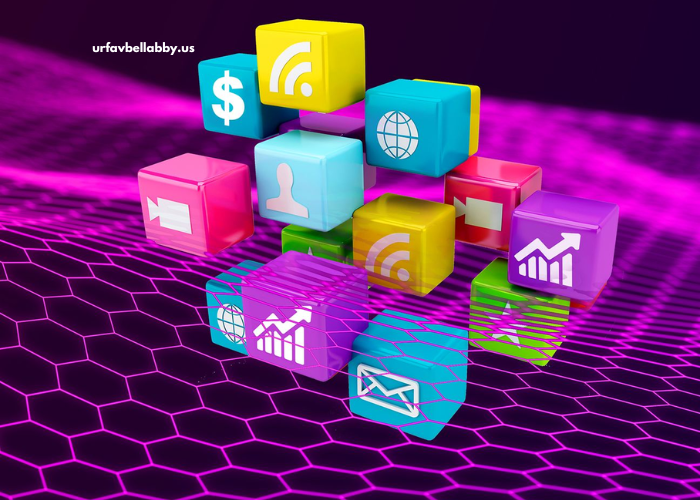The emergence of 5G technology is revolutionizing the way we connect and communicate across the globe. With its lightning-fast speeds, low latency, and the ability to support a multitude of devices simultaneously, 5G is paving the way for unprecedented advancements in a wide range of industries. From healthcare to entertainment, smart cities, and beyond, 5G is transforming global connectivity and reshaping how we experience technology on a daily basis. In this article, we will explore how 5G technology is playing a pivotal role in enhancing connectivity worldwide and driving innovation across various sectors.
Understanding 5G Technology
Before diving into how 5G is changing the connectivity landscape, it’s essential to understand what 5G technology is and how it differs from its predecessors, 4G and 3G. 5G, or fifth-generation wireless technology, represents the latest advancement in mobile networks. It is designed to provide significantly faster data speeds, reduced latency, and increased network capacity compared to previous generations.
Key Features of 5G
-
Higher Speeds: 5G technology offers data speeds up to 100 times faster than 4G, enabling faster downloads, smoother streaming, and better overall user experiences.
-
Low Latency: One of the most significant benefits of 5G is its ultra-low latency, meaning the time it takes for data to travel from one point to another is drastically reduced. This is crucial for applications requiring real-time communication, such as autonomous vehicles, remote surgeries, and gaming.
-
Massive Device Connectivity: 5G can support millions of devices per square kilometer, allowing for seamless connectivity in crowded areas and enabling the Internet of Things (IoT) to flourish.
-
Increased Capacity: With higher frequencies and more efficient use of the available spectrum, 5G can handle an enormous amount of data traffic, ensuring that networks remain stable even during peak demand periods.
How 5G is Transforming Industries
The impact of 5G is not limited to improving mobile experiences. Its transformative potential is felt across various industries, unlocking new opportunities and driving innovation. Let’s take a closer look at how 5G is changing key sectors:
1. Healthcare
One of the most promising applications of 5G technology is in the healthcare industry. With its ability to transmit large amounts of data quickly and with minimal delay, 5G is enhancing telemedicine, remote patient monitoring, and real-time diagnostics.
Telemedicine and Remote Care
5G enables high-definition video consultations, which are critical for remote healthcare services. Doctors can conduct virtual consultations with patients from the comfort of their homes, significantly improving access to healthcare, particularly in rural or underserved areas. The ultra-low latency of 5G also ensures that remote surgeries and consultations with specialists can be performed in real time, enhancing the overall quality of care.
Real-Time Diagnostics and Monitoring
The low latency and high data speeds of 5G enable healthcare professionals to monitor patients’ vital signs in real time, even from a distance. Wearable devices connected to 5G networks can send data continuously, allowing healthcare providers to make informed decisions promptly and intervene when necessary.
2. Smart Cities
The concept of smart cities is becoming a reality thanks to 5G technology. By providing reliable and fast connectivity, 5G is facilitating the development of smart infrastructure, transportation systems, and public services.
Smart Transportation
5G is playing a critical role in the development of autonomous vehicles. With the ability to transmit real-time data to and from vehicles, traffic management systems, and infrastructure, 5G enables self-driving cars to operate more safely and efficiently. Additionally, smart traffic lights, connected vehicles, and real-time communication between transportation systems can reduce traffic congestion and improve overall urban mobility.
Public Safety and Security
5G technology enhances public safety by enabling smart surveillance systems, real-time monitoring of emergencies, and faster communication between emergency responders. For instance, 5G-connected surveillance cameras can send high-quality video feeds instantly to law enforcement agencies, improving response times during critical incidents.
3. Entertainment and Media
The entertainment and media sectors are also experiencing significant transformations due to 5G technology. With faster download speeds, ultra-low latency, and increased bandwidth, 5G is enabling new forms of media consumption, immersive experiences, and content delivery.
Enhanced Streaming and Gaming
5G enables the seamless streaming of high-quality 4K and 8K videos, as well as virtual and augmented reality content. Streaming services like Netflix, YouTube, and gaming platforms are set to benefit from faster download speeds, ensuring that users can enjoy uninterrupted content without buffering or lag.
Additionally, the high bandwidth and low latency of 5G make it ideal for cloud gaming services. Players can stream games in real-time without the need for expensive hardware, opening up gaming experiences to a broader audience.
Augmented and Virtual Reality
The capabilities of 5G are enhancing the development of augmented reality (AR) and virtual reality (VR) experiences. With faster data speeds and lower latency, users can enjoy immersive AR and VR environments in real time, making applications in gaming, education, and entertainment more interactive and engaging.
4. Manufacturing and Industry 4.0
The manufacturing sector is undergoing a major transformation with the advent of 5G. Industry 4.0, the next phase of industrial revolution, is being driven by advanced technologies like the Internet of Things (IoT), robotics, and automation, all of which rely on the high-speed connectivity provided by 5G.
Smart Factories
5G enables the creation of smart factories where machines, devices, and production lines are connected in real time. This connectivity allows for automated processes, predictive maintenance, and enhanced efficiency. Sensors embedded in machinery can continuously monitor performance, sending data to the cloud for analysis and enabling maintenance teams to address issues before they result in costly downtime.
Automation and Robotics
5G networks provide the necessary bandwidth and low latency for real-time control of robots and automated systems. This is particularly valuable in sectors like automotive manufacturing, where robots perform precise tasks that require immediate feedback and coordination.
5. Agriculture
5G technology is also making strides in the agricultural sector. By integrating IoT devices, sensors, and automation, farmers can optimize crop production, monitor livestock, and improve overall farm management.
Precision Farming
With 5G, farmers can leverage advanced sensors and IoT devices to collect real-time data on soil health, weather conditions, crop growth, and more. This data is transmitted instantly, allowing farmers to make data-driven decisions that improve crop yields and reduce waste. Drones and autonomous vehicles can also be deployed for tasks like planting seeds or spraying pesticides, all of which can be controlled remotely with the help of 5G connectivity.
Livestock Monitoring
Farmers can use 5G-enabled devices to monitor the health and well-being of livestock. Real-time tracking of animal behavior, location, and health metrics can help prevent diseases, improve breeding practices, and increase overall productivity.
The Global Impact of 5G
The global rollout of 5G networks is not just limited to developed countries but is also reaching emerging economies. The widespread availability of 5G networks will contribute to bridging the digital divide, providing access to faster internet and improved connectivity for people in remote or underserved areas.
Bridging the Digital Divide
In regions where broadband infrastructure is limited or non-existent, 5G technology can provide a cost-effective solution for delivering high-speed internet. This has the potential to empower individuals, businesses, and communities by providing access to online education, telehealth services, e-commerce, and more.
Economic Growth and Job Creation
5G technology is expected to create new economic opportunities and generate millions of jobs worldwide. According to reports, the global 5G market could contribute trillions of dollars to the global economy over the next decade. Additionally, the adoption of 5G will create demand for new skills and expertise in areas such as network engineering, cybersecurity, data analysis, and IoT development.
Challenges and Considerations
While the benefits of 5G are undeniable, the technology also comes with its share of challenges. One of the key concerns is the cost of infrastructure development. Upgrading existing networks to support 5G requires significant investment, which could be a barrier for some countries or regions. Moreover, there are concerns related to privacy, security, and health, as the increased number of connected devices raises the potential for cyber threats and data breaches.
Conclusion
5G technology is undeniably transforming global connectivity, enabling faster, more reliable communication, and unlocking new possibilities for innovation across industries. From healthcare to entertainment, manufacturing, and agriculture, the applications of 5G are vast and varied, promising to improve efficiency, productivity, and quality of life for individuals and businesses alike.
As the world continues to embrace 5G technology, it will be essential to address the challenges and ensure that its benefits are accessible to all. With the right investments in infrastructure, policy, and innovation, 5G has the potential to drive a new era of global connectivity, creating a more interconnected and prosperous world for generations to come.





